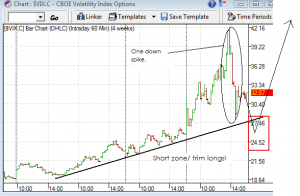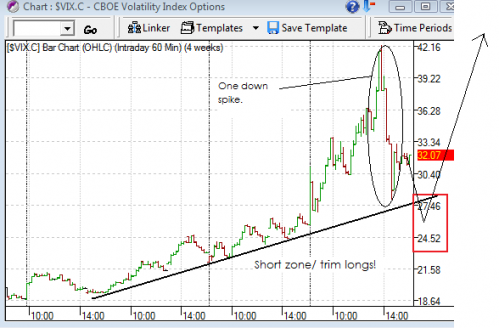By Robert MacMillan
NEW YORK, Sept 19 (Reuters) – There’s something about hundreds of billions of dollars vanishing overnight that begs a comparison to the 1929 market crash and the Great Depression.
Almost — but not yet.
The United States has seen the destruction of some of its biggest names in finance, thousands of lost jobs and threats to the stability of the world banking system. All in one week.
The losses are staggering, more than $1 trillion in taxpayer dollars pledged by the U.S. government to mop up bad mortgage debt and prop up the financial system. The final tab could be far greater.
To put it in perspective for Wall Street and the world outside, news outlets have latched onto the 1929 crash and the subsequent Great Depression as their historical benchmarks.
Michelle Caruso-Cabrera, a reporter at business news cable network CNBC, told viewers it was “one of the most historic weeks in financial and American history.”
Hold on a minute, market veterans and scholars say. It’s serious, because it has been preceded by a 13-month credit crisis that has gotten worse despite government efforts to solve it. But it has yet to reach the cataclysmic scale of the Depression.
“I’ve lived through plenty of debacles. Each time you go through it, it seems like the worst since 1929,” said Theodore Weisberg, a New York Stock Exchange member for some 40 years.
“The nomenclature of the word ‘crisis’ has cheapened,” said Roy Smith, a professor at New York University’s Stern School of Business and former partner at Goldman Sachs .
No one disputes that it is a profound crisis, but Depression-level may be overdoing it, said Allan Sloan, Washington Post and Fortune magazine columnist.
“I don’t think so, considering that the Great Depression had thousands of banks failing and people losing their life savings, 25 percent unemployment and social unrest and tent cities of the poor,” Sloan said.
BLACK MONDAY, TUESDAY, THURSDAY
Financial earthquakes that have prompted fearful murmurings of the bad old days include the Asian financial crisis in the late 1990s and and the dot-com bust early in this decade that wiped trillions of dollars of paper wealth off the Nasdaq market.
Then there was October 1987, when stock markets around the world crashed. History books are spotted with numerous references to Black Mondays, Tuesdays and Thursdays.
It is clear that the current financial meltdown that killed Lehman Brothers , sold off Merrill Lynch and forced the U.S. government to take over insurance provider American International Group could radically change nearly a century’s worth of financial policy.
Each faltered on debt and other interrelated, complex financial instruments that ensured a more rapid collapse than Wall Street and regulators could handle.
That is a key similarity to the crash 79 years ago, said Maury Klein, professor emeritus at the University of Rhode Island and author of “Rainbow’s End: The Crash of 1929.”
“What’s similar in each case is you have a situation where you’re starting to play in ever-larger stakes with things that you don’t understand,” he said.
But today’s overall U.S. economic picture is quite different.
“With just 6 percent unemployment, we are having a debate as to whether we are even in a recession,” said Richard Sylla, professor of the history of financial institutions and markets at New York University.
WHERE WILL IT STOP?
Prominent economic columnist Robert Samuelson wrote a piece in the Washington Post in July titled “A Depression? Hardly.” He said he would write the same column now, but “with less conviction.”
That is because there is no telling where the erosion will stop. The bad-bet loans made on homeowners during the recent U.S. housing boom and shady trades could burrow deeper into the financial nervous system than anyone anticipated.
This can hurt regular people too. It may destroy their investments, further degrade home values and cost them their jobs. It may be hard, but not as hard as eating a loaf of bread as their sole daily meal before sleeping under the stars.
“The only question is whether the crisis is so deep that you can’t get at it at all,” said Columbia University professor and Council on Foreign Relations Senior Fellow Jagdish Bhagwati. “We have instruments like the Federal Reserve coming in. Only the United States could do it in such a big way.”
The fear at the back of everyone’s mind is that the turmoil could spill into the real economy — “the factories where they actually make things and retail establishments and transportation providers,” said Robert Bruner, dean of the University of Virginia’s Darden School of Business.
Federal Reserve Chairman Ben Bernanke and U.S. Treasury Secretary Henry Paulson are determined to avoid the mistakes of 1929, said Brad DeLong, economics professor at the University of California, Berkeley.
“They want to make their own, new mistakes.” (Reporting by Robert Macmillan; Additional reporting by Bob Margolis; Editing by Eddie Evans)
Now that everyone is talking about the economy, want to impress people with your economics nomenclature? Here’s a few terms you should know when discussing about a Depression:
The Smoot-Hawley Tariff
In 1988, the Council of Economic Advisors proclaimed that the Smoot Hawley Tariff Act was “probably one of the most damaging pieces of legislation ever signed in the United States.” The act was passed in June of 1930 and increased tariffs to a tax of 50 percent on goods imported into the United States. Since this occurred after the onset of the Depression, it’s hard to see how it could have caused it. However, since the real effect of the increased tariffs was to increase prices and increase price rigidity, it is easy to see how the Act could have exacerbated the Depression. Enacting the tariff was exactly the wrong thing to do and about 1,000 economists signed a petition begging Congress not to pass it. Eventually, 60 other countries passed retaliatory tariffs in response.
Sticky Prices/Sticky Wages
Prices and wages change in accordance to the scarcity of goods and labor relative to the amount of money that is available to buy them. For example, if the Federal Reserve Boardincreases the nation’s money supply, then prices and wages will tend togo up, reflecting the fact that more money is chasing the same amount of goods and labor. When the Fed does too much of this, it is called inflation. But what happens if the money supply goes down relative to the amount of goods and labor? Eventually, the price of goods and labor will go down as well in the long run. But in the short run, prices and wages can “stick” at a higher level than the market clearing price or wage. When this happens, people buy less and employers hire less, thus causing cut backs in production and employment. There are a number of reasons why prices and wages might stick. One reason is referred to as “menu costs,” meaning that it often costs money to change a price. A good example is a restaurant that has to print new menus every time the prices change.
Some Great Depression 1920-1940 terms:
Agricultural Adjustment Administration (AAA)
An administration created by Congress in 1933 to help destitute farmers. The AAA reset prices for agricultural commodities at their high, pre–World War I prices and paid farmers subsidies to cut production.
Crash of 1929
The massive crash of the U.S. stock market on “Black Tuesday,” October 29, 1929. The crash occurred after American investors dumped more than 16 million shares in one day. Within two months, more than $60 billion had been lost. The crash was the primary catalyst for the Great Depression.
Social Security Act
A 1935 act that established pensions for the elderly, handicapped, and unemployed. The Social Security Act completely changed the way Americans thought about work and proved to be one of the most significant pieces of legislation in the Second New Deal.
Works Progress Administration (WPA)
A government administration created in 1935 to hire over 10 million American men to construct public works projects such as roads, bridges, and public buildings. The WPA, one of the most significant programs created during the Second New Deal, helped provide immediate relief for many Americans during the Great Depression.
Franklin Delano Roosevelt
A distant cousin of former president Theodore Roosevelt who served as governor of New York before becoming the thirty-second U.S. president in 1933. Roosevelt’s main goal was to end the Great Depression. His New Deal programs and policies focused on immediate relief, long-term recovery, and reform in order to revive the economy. Despite the fact that he was usually wheelchair-bound (he was stricken with polio as a child), his optimism and charm did much to convince Americans that they had “nothing to fear but fear itself.” After the depression, Roosevelt successfully led the United States through World War II, was reelected to an unprecedented fourth term in office, and died while still in office on April 12, 1945.



